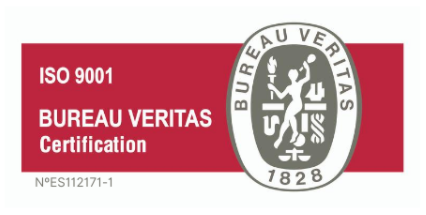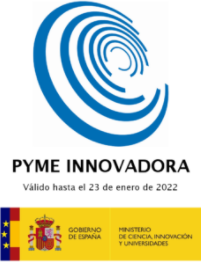Quality control in the pharmaceutical industry is one of the most rigorous, whose objective is to guarantee the effectiveness and safety of the manufactured drug, ensuring compliance with current regulations. On the one hand, there is a control on each of the phases until the batches of drugs are correctly packaged. On the other hand, there is a specific phase, the drug quality test, which is within the chain, full of very varied controls.
At Mesbook we are experts in implementing an EBR system in the pharmaceutical sector that has achieved customer satisfaction and we would like to share our experience in this post.
What is quality control in the pharmaceutical industry?
Quality control is the implementation of mechanisms, programs and tools for product improvement and assurance. Process quality or productivity can also be taken into account.
In a quality control of the pharmaceutical industry, numerous analyses must be carried out to establish whether the drug meets the legal requirements of the companies and the parameters that pharmaceutical products must meet according to the specifications.
For example, it checks whether drug batches comply with the conditions that enable them to guarantee effectiveness and stability. Quality control is not only carried out on raw materials and semi-finished products in the pharmaceutical industry, but also during the manufacture and packaging of the drug, or even the form of transport must undergo an evaluation.
These controls comply with Good Manufacturing Practices (GMP).
But the importance of quality control in the pharmaceutical industry lies in its API, its active ingredient or substance that gives the drug its pharmacological effect. That is to say, the one by which it has a specific function.
The quality control area in the pharmaceutical industry must identify the API and assess its quality. Only once this phase has been completed will the dosage, presentation and the entire manufacturing process also be evaluated. Therefore, the first control is the raw material and semi-finished product and then the relationship of the packaging and other factors according to their qualities. Depending on the API, the dosages will be the same.
Most important aspects of quality control in the pharmaceutical industry
In quality control in the pharmaceutical industry, there are no more or less important aspects, because if one fails, the whole chain could fail if it is not detected in time.
Therefore, there is always in quality control, a software based on a system of measurement, correction, prevention and others. In Mesbook we have the quality control software that adapts to each factory and offers features and advantages that you need for an effective and unequivocal management.
However, it is true that there are phases or studies that are considered to be of greater relevance in quality control. These are: related substance testing, dissolution and biological testing.
How is the quality analysis of a drug performed?
Quality management in the pharmaceutical industry, like other sectors, has a series of specific steps related to its area of control. All of them are essential and sometimes the order in which they are performed can be very important.
Hygiene:
This is undoubtedly the first phase of quality control, or also an omnipresent phase since it is controlled during all processes. Hygiene control is present in raw materials, but also in packaging, accessories, equipment, personnel, and so on.
Stock control and measurement of raw materials and products:
Stock control may not seem crucial, but sometimes it is the quantity of each raw material that is controlled. Considering that a certain dose of each raw material is needed for a drug, every gram counts.
Similarly, the production of packaging for these drugs must be controlled in a coordinated manner. It is also important to know the stock of already packaged drugs as well as their weight and measurement, and of course, the periodicity of the entry of new raw materials.
If these logistics were to fail, the drugs could be exposed to other temperatures or have faulty packaging forms or even fail to be packaged on the date set, for example.
Also, storage must meet quality standards in relation to space, temperature and light .
Tests:
Before raw materials are converted into pharmacological products, physicochemical and microbiological tests must be carried out. Finally, they must be certified for their efficacy.
As a note, the so-called Dissolution Tester is one of the key elements or tools in quality control. It is used to analyze all the components of each drug, as well as to know the exact quantities.
Selection:
- This is the last phase of quality control in the pharmaceutical industry. Most commonly, a process known as measurement is carried out in which decisions are made regarding the development of batches of drugs. It is the last phase before they are transported for sale.
What methods or techniques are used to control quality in the pharmaceutical industry?
There are many different techniques. But as in the phases of the process, beyond the effectiveness of each of the parts, it is important to have control over them.
For example, to know the coordination of the phases, the effectiveness as a whole and individually, cost reduction (by reducing errors and increasing productivity), predict changes or errors, establish improvements, establish the importance of each phase and the agents in charge of carrying them out, parameters, measurements, etcetera.
For this you need a quality control software, to ensure the safety of the drug, whose application is consistent and not dependent on people. At Mesbook we offer a robust, improved and flexible control system for your business. In addition, it offers the advantages you are most interested in: 100% traceability control, paperless quality controls, control guidelines according to the product and line where it is manufactured, identification of non-conformities and immediate corrective actions.
These are some of the quality control techniques you can manage:
- Appearance: qualitative description phase of color control, shape...
- Content: in order to establish the degree of purity of the drug.
- Related substances: this is the most important analysis of all and consists of finding impurities.
- Physical-chemical properties: acidity, purity, pH...
- Dissolution tests: these are used, among others, to know how the drug behaves in the human body.
- Biological assays: the different properties of the drug are evaluated and it is when it is finally determined whether it meets the quality standards. Microbiological organisms are used for this purpose, hence the name.
Contact us and try our service without obligation. We look forward to implementing our quality system in your project.

Assistant to Commercial Management
Concepcion Albert
Industrial Engineer with more than 15 years of experience in leadership and operations management, developed in the UK and Spain in the food industry and others. Used to train, lead and motivate teams oriented to the achievement and attainment of objectives within a culture of Continuous Improvement, as well as the creation of new business areas.




